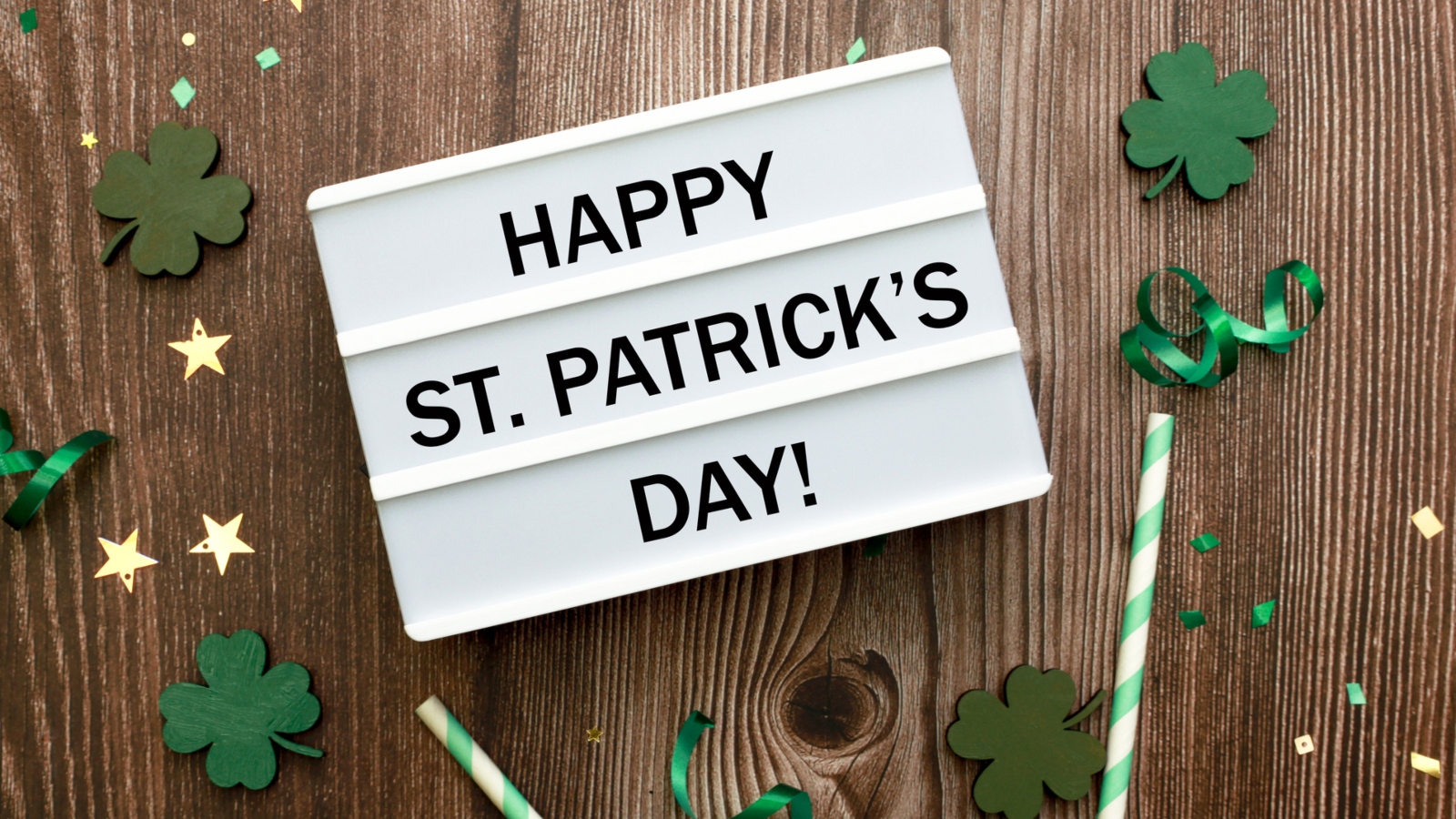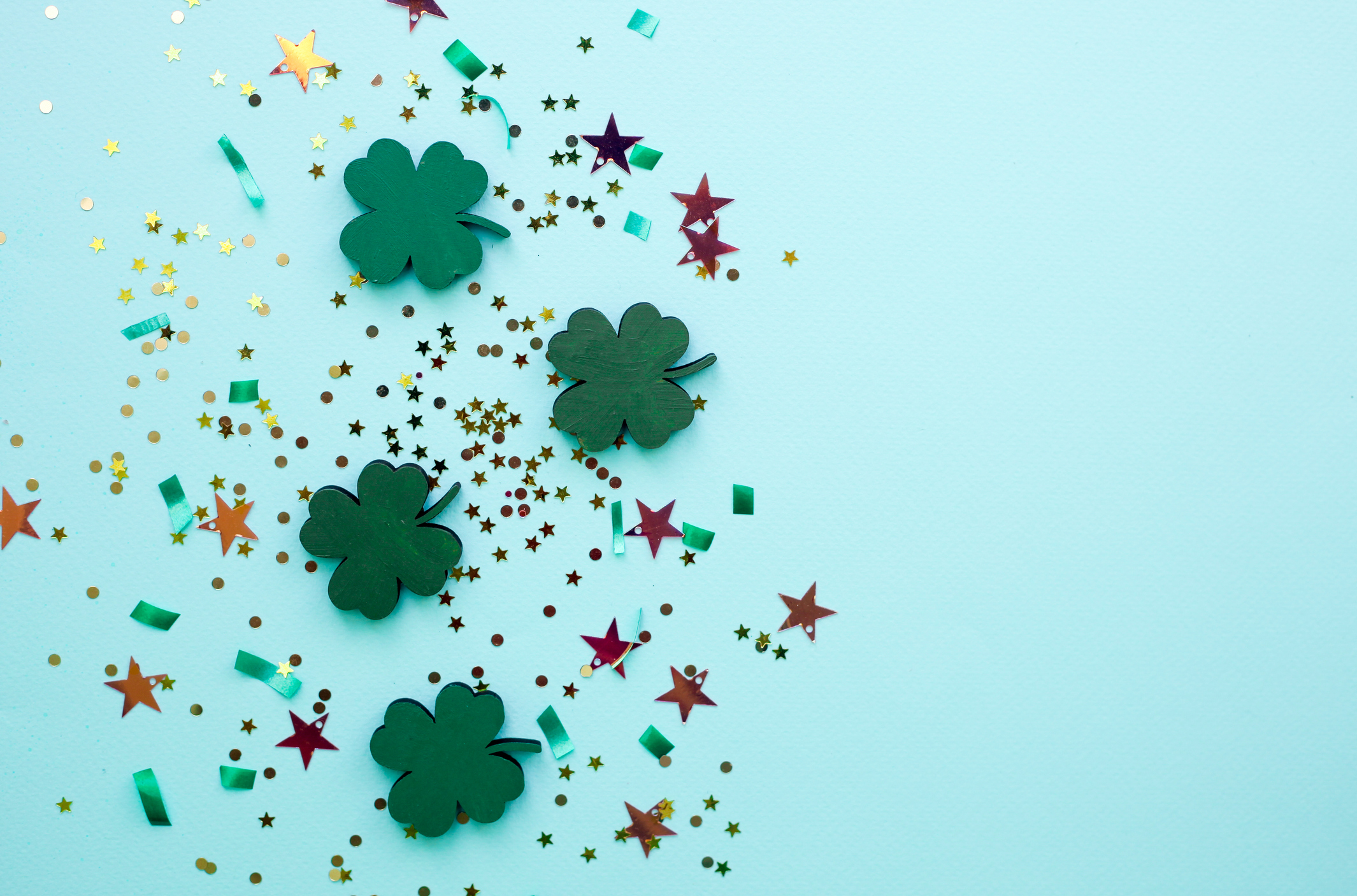Happy St Patrick's Day in Irish—learn how to greet someone in Ireland's native Gaelic
Happy St Patrick's Day in Irish—how to say it in Ireland's native tongue and other easy greetings to use on St Patrick's day and beyond


Happy St Patrick's Day in Irish is easy to say but, as with many words in the Irish language, has very confusing spelling for non-native speakers. Here's your how to on how to greet people in Ireland's mother tongue and a few other sayings to keep in your wheelhouse for future use.
Considering the tiny dot on the map that is Ireland, the land of saints and scholars has spread its influence across all four corners of the globe. On March 17 every year, people all over the planet drink Guinness, don more shades of green than you even realized existed, and make fashion statements like DIY St Patrick's Day nails.

How to say Happy St Patrick's Day in Irish
As anybody who's familiar with Irish names will tell you, it's not a phonetic language so the best thing to do is just ignore the visual element of the phrase, and begin with the phonetics.
Happy St Patrick's Day in Irish, or as Gaeilge as we say in Irish, sounds like, “Law leh Paw-drig suna ghit.”
It's written as, “Lá Fhéile Pádraig sona duit!”
Here's a very handy video from Gaelchultúr Teoranta, a Youtube channel dedicated to making learning Irish easy.
You may also like...
Sage green—how to use this timeless color in a modern and fresh way in your home
Easy Irish phrases
- Sláinte (slawn-cha)—technically means 'good health' but it's more commonly used to toast a drink!
- Failte (fall-cha)—welcome
- Dia dhuit (jee-ah-gwit) —hello
- Slán (slawn)—goodbye
- Go raibh maith agat (Guh rev mah agut)—thank you
- Tá failte romhat (taw fall-cha roat)—you're welcome
History of the Irish Language
Notoriously tricky, Irish is one of the oldest written and historical languages in the world. Per Údarás na Gaeltachta, it's a Celtic language that is closely related to Scottish and Manx Gaelic. It is also related to Welsh, Cornish, and Breton languages too.
Sign up for the woman&home newsletter
Sign up to our free daily email for the latest royal and entertainment news, interesting opinion, expert advice on styling and beauty trends, and no-nonsense guides to the health and wellness questions you want answered.
It has three main dialects—Munster, Connacht, and Ulster—which differentiate the language.
Sadly, the Irish language is one of the many languages that have been ravaged by colonialism, with the vast majority of Irish people speaking English as their mother tongue.
Despite this, Irish people still learn to speak their native tongue in school and there are areas known as 'Gaeltacht' areas where the language is still the predominant language spoken.

Aoife is an Irish journalist and writer with a background in creative writing, comedy, and TV production.
Formerly woman&home's junior news editor and a contributing writer at Bustle, her words can be found in the Metro, Huffpost, Delicious, Imperica and EVOKE.
Her poetry features in the Queer Life, Queer Love anthology.
Outside of work you might bump into her at a garden center, charity shop, yoga studio, lifting heavy weights, or (most likely) supping/eating some sort of delicious drink/meal.
-
 Sarah Jessica Parker just gave her skinny jeans a surprising spring update and the result has us reaching for this outfit combination
Sarah Jessica Parker just gave her skinny jeans a surprising spring update and the result has us reaching for this outfit combinationSarah Jessica Parker shows us how to update jeans to wear them throughout spring with one simple styling trick
By Rivkie Baum
-
 My confidence 'soared' after I tried the 3-2-1 workout method - here's how it revolutionised my routine
My confidence 'soared' after I tried the 3-2-1 workout method - here's how it revolutionised my routineFor the past two weeks, I have been doing the 3-2-1 workout method to boost my fitness, flexibility, and strength
By Susan Griffin